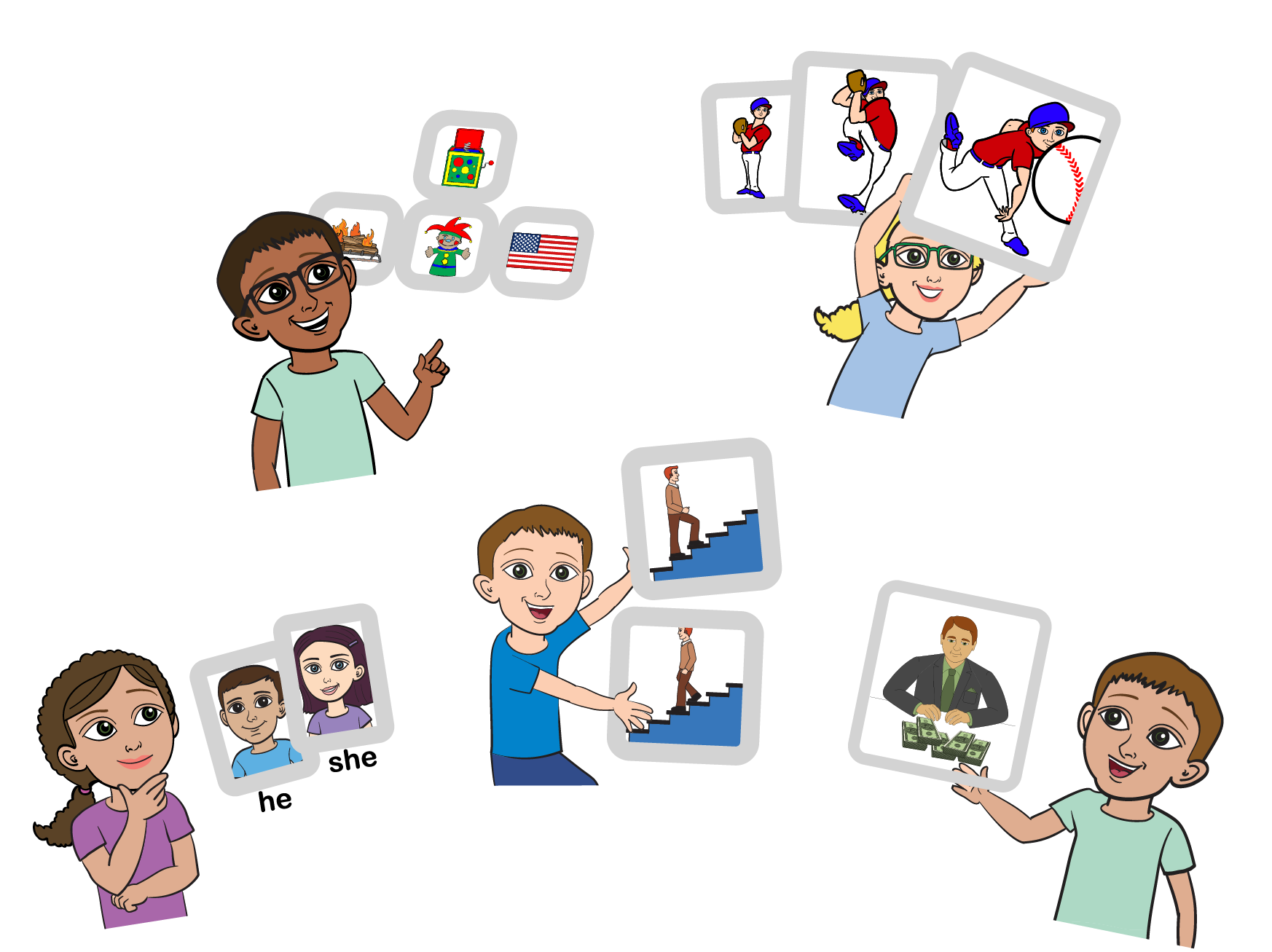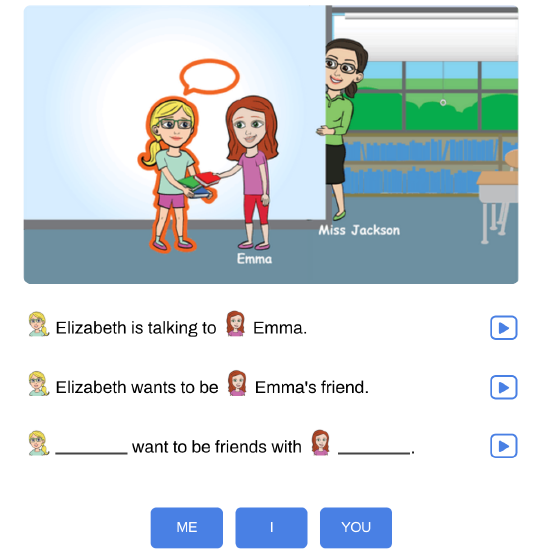Why are Speech Kingdom Games so Effective?

Speech Kingdom games embrace best practices and proven therapies.
Our Games are Fun
- It's fun for students to see themselves in the pronoun sets.
- It's fun for students learn about opposites and idioms.
- It's fun to find the missing piece of a picture.
- It's fun to figure out what happened next.
It's also loads of fun to play games on tables, smartphones and on computers!
What's Missing

What's Missing teaches basic early inferencing through a series of pictures of objects, each with something missing. Students choose the missing item from a bank of pictures, then drag and drop it to complete the image.
What Happened Next

What Happened Next furthers the teaching of inferencing through a sequence of 3 pictures with one picture missing. Students choose the missing image from a bank of images to complete the sequence. What Happened Next has multiple levels of difficulty plus a random function.
Pronouns

Pronouns teaches the proper use of pronouns in four levels, from Fundamental through Proficient. Students see characters, including themselves in pictures and choose from a bank of pronouns to fill in the blank(s) in a descriptive sentence.
Speech Kingdom Pronouns puts your student in the actual scene, which is essential to effectively teach pronouns, especially pronouns such as ME, I, and YOU.
Opposites

Opposites, one of the most popular games among parents and therapists (kids love it, too!), teaches visual and cognitive skills related to the identification and selection of opposites. Students choose the corresponding opposite from bank of images and/or words to identify the opposite of a given image or word. Opposites is presented with multiple levels of difficulty plus a custom option.
Idioms

With the exception of Pronouns and Opposites, Idioms has been our most requested game. The concept and comprehension of idioms is very difficult for a large number of our students to grasp. Idioms addresses this issue with beautiful graphics and audio.
Pictured here is an example of, "Your eyes are bigger than your stomach," taken from our idioms library.
Find the Picture

Cognitive stimulation for beginners. Students select the picture from a bank of 2-6 images that matches a detailed description. Depending on reading ability, students hear or read the description (or both).

